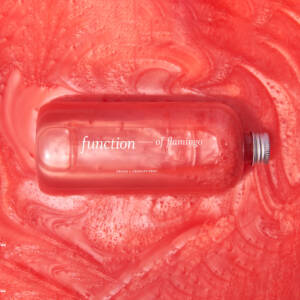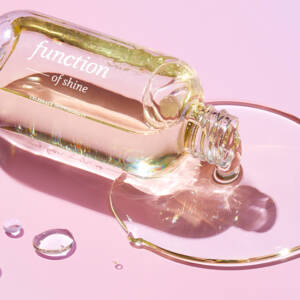
Think you know your hair type but can’t always find products that will work for it? Chances are you’re not as in tune with your hair type as you thought. Much like understanding your skin type is crucial for implementing an effective skincare regimen, determining your hair type can play a massive role in the efficacy of your daily hair care routine. And yet, figuring out your correct hair type may be easier said than done. That’s where a hair type chart comes in handy.
In addition to the obvious categories like straight, wavy, curly, and coily, a hair type chart can include several other factors to consider when pinpointing your unique hair type. If choosing among all the different hair types and factors sounds overwhelming, don’t worry — we’re here to help. We’re sharing everything you need to know about determining the type of hair you have and what that means for your daily hair care routine.
Hair Texture

While hair type charts vary in what hair qualities they feature, one factor they always include is texture. Hair texture generally refers to the natural shape or pattern of your hair strands. If you’re unsure about which category you fall into, leave your hair free of products and let it air dry the next time you wash it. If it dries straight without a bend or curl, then you have straight hair (or type 1 hair as it is commonly referred to). If it dries with a slight curve or “S” shape, then it’s considered wavy hair (type 2).
If your hair dries with a defined curl or loop pattern, you have one of two curl types. Type 3 curly hair has springy ringlets or corkscrew curl patterns but is not as dense as coily hair. Coily hair texture is classified in the type 4 category and is often called a natural hair type. It’s characterized by dense spirals, zig-zag patterns, and shrinkage that occurs when its tight coils go from wet to dry. This hair type is more fragile and prone to breakage than others, requiring a more specialized hair care routine.
But just because two people both have a natural wave to their tresses doesn’t mean they possess the same exact hair type. While they may both have type 2 hair, one might have type 2b hair and the other a type 2c. Likewise, two people with coily hair can vary between type 4a hair, type 4b hair, and type 4c hair. This is because hair type charts contain subcategories within each of the four textures. The classification system within each texture relates to hair structure — let’s get into it.
Hair Structure

When we talk about hair structure, we’re referring specifically to the thickness of the strands, which can affect how well your locks hold different hairstyles and react with certain hair products. Generally, your hair can fall into three categories: fine, medium, and coarse (or thick). So for example, when a hair type chart is used to determine different types of curls, someone with fine hair and loose curls would probably be classified as a type 3a curly hair type.
How to Figure Out Your Hair’s Structure

An easy way to tell whether you have thick or thin hair is to take a single strand from your hairbrush and lay it down on a plain, flat surface. Next, cut a piece of sewing thread about six inches long (choose a similar color to your hair if you can) and place it next to your strand of hair. If your hair appears thinner than the sewing thread, you have thin hair; if it seems thicker, it’s likely coarse. Anything in between them would be medium.
You can also tell your hair’s structure by how well it holds a hairstyle, especially with straight and wavy hair. For example, if you have fine type 2a waves your hair looks and feels delicate and will not hold onto curls very well. Medium hair is relatively easy to style and will hold its shape for a longer period of time. Thick hair can hold curls very well but can often be difficult to style as it’s typically less supple and can become frizzy more easily.
Pro Tip: Make the most out of your natural hair structure with these no-heat hairstyles.
Hair Porosity

Porosity refers to your hair’s ability to absorb moisture and product. While not as commonly discussed as part of the hair typing system, knowing how porous your hair is can help you determine what kind of styling products you should be putting on your locks.
An easy way to assess your hair’s porosity is to place a single strand of hair into a bowl of water. If your strand sinks to the bottom, it has high porosity, which means it is absorbing all the moisture. If the strand remains below the surface but floats above the bottom of the bowl, your hair is well-balanced and of normal porosity. Finally, if the strand of hair floats above the surface of the water, your hair has low porosity, which means it does not absorb moisture easily.
What does that all mean for your hair? Hair with high porosity typically absorbs moisture too quickly because of gaps or tears around the cuticle. Those damaged areas cause it to release moisture at a high rate, making it dry and brittle. For these hair types then, it’s best to avoid heat styling and harsh chemical treatments that can cause frizz, dryness, and breakage.
Instead, look for nourishing hair masks, oils, and leave-in treatments that will provide extra moisture and help seal the cuticle to prevent future damage from occurring.
Low porosity hair types, on the other hand, are those where the cuticle lays flat blocking water or moisture from being absorbed into the strands. For these hair types, the biggest concern is typically product buildup, especially with thick hair oils and mousses. That’s why it’s recommended you apply products while your hair is still damp to help ensure they’re more easily absorbed and distributed.
Pro Tip: Here’s the best leave-in conditioner for all hair porosity types.
Scalp Moisture

By now we all know that if your scalp isn’t in good shape, your strands won’t be either. Taking care of your scalp isn’t just a good idea — it’s a must. Determining the condition of your scalp can be easier said than done as you may experience both an oily scalp and dry, split ends.
To determine how oily your scalp is, we recommend inspecting your hair and scalp on the second day after a wash. If your roots appear flat and greasy, you’re most likely dealing with an oily scalp. In that case, we suggest adding our oil control hair goal to your shampoo formula to help balance out your scalp’s sebum production and prevent the risk of buildup.
How to Tame Flakes and Oiliness

If you experience flaking, chances are your scalp is dry and in need of a more gentle, hydrating shampoo and conditioner like our customizable formulas. These can be formulated specifically for a dry scalp to ensure that your hair is properly cleaned without ever being stripped of its natural oils.
But what if your scalp is both oily and flaky? A mix of symptoms is typically brought on from product and oil buildup due to infrequent or improper washing. In that case, consider adding both the oil control and soothe scalp hair goals to your formula as it will help limit excessive oil and buildup.
Pro Tip: Learn how to deal with both dry scalp and oily hair.
Why Hair Type Charts Matter

After going through these hair tests, you may discover your hair is a mix of different types — curly but highly porous, or fine but extremely dry. Either way, having a thorough understanding of hair type charts will make for better and easier hair care decisions to help ensure your strands always look and feel their best.
Ready to start properly caring for your hair type? Find your perfect hair care formula now by taking our quiz!





